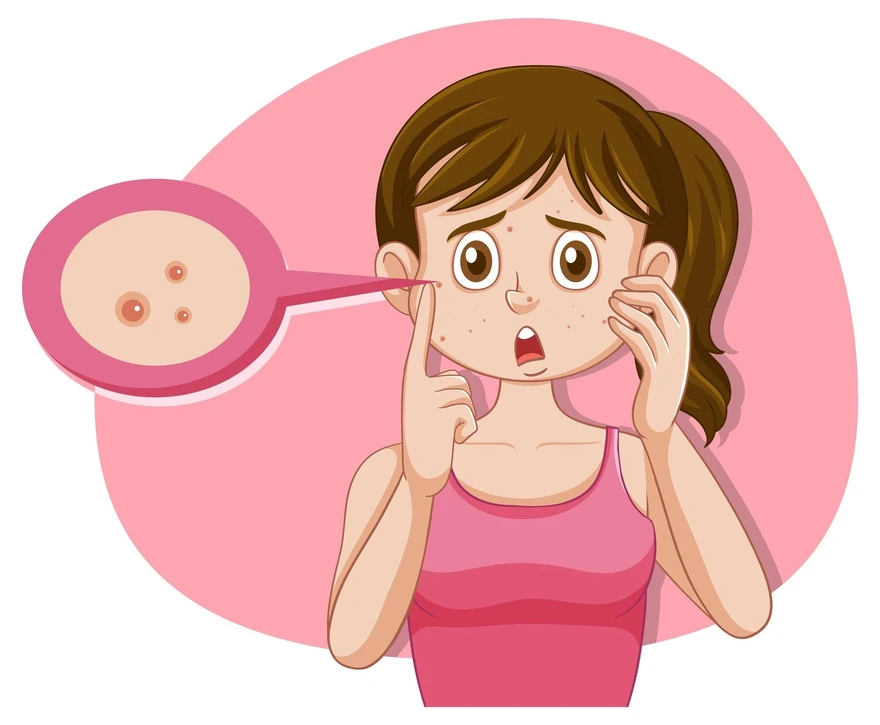Preventive Healthcare
Boils and Carbuncles: Symptoms, Causes, and Effective Treatment Methods
793 Views
0

What are Boils and Carbuncles?
A boil is a painful, pus-filled bump that forms under the skin due to a bacterial infection in one or more hair follicles. Initially begins as a tender reddish or purplish bump, it quickly fills with pus becoming larger and more painful until it ruptures and drains.
On the other hand, a carbuncle is a cluster of boils creating an interconnected area of infection beneath the skin. They cause deeper infections compared to single boils and often leave scars.
What are the symptoms of a Boil?
Boil symptoms typically include:
- Red, Painful Bump: The initial sign is a small, firm, red, and tender bump on the skin
- Swelling: The area around the boil becomes swollen and inflamed
- Pus Formation: The center of the boil fills with pus, creating a white or yellow tip
- Warmth: The skin around the boil feels warm to the touch
- Increased Size: The boil gradually enlarges as it fills with more pus
- Swollen Lymph Nodes: Nearby lymph nodes may become swollen and tender
What are the symptoms of Carbuncles?
Carbuncle symptoms include:
- Multiple Painful, Red Bumps: Typically larger and deeper than single boils
- Swelling: The surrounding skin becomes swollen and tender
- Pus Drainage: Multiple heads may release pus
- Fever and Chills: Systemic symptoms like fever and chills can occur
- Fatigue: General feeling of malaise
What causes Boils and Carbuncles?
Most boils are caused by Staphylococcus aureus, a type of bacteria which is commonly found on the skin and inside the nose. The bacteria causes a bump to form as pus collects under the skin. Boils causes often include sites where the skin has been broken by a small injury or an insect bite, giving the bacteria easy entry.
Certain factors increase your risk of developing these conditions including a close contact with someone who has a staph infection, diabetes or other skin conditions like acne and eczema that damage your skin's protective barrier, and compromised immunity.
Can I treat a Boil at home?
A boil treatment at home can often be effective, especially for smaller boils that haven't progressed too far.
Here are some steps you can take:
- Firstly, applying hot compresses to the boil several times a day. This encourages the growth of the boil and encourages its natural drainage. Use a clean washcloth dipped in warm water and keep it boiling for about 10 to 15 minutes at a time.
- Next, once the boil starts to drain, keep the area clean and covered with a sterile bandage. This prevents the spread of infection and helps the healing process.
- You can also try over-the-counter treatments like topical antibacterial ointments, which can help to prevent infection and promote healing. Make sure to follow the instructions on the package and consult a pharmacist if you have any questions.
- It's important not to try to squeeze or "pop" the boils and carbuncles yourself, as this can spread the infection or lead to further complications.
- If the boil is large, very painful, or doesn't improve with home treatment, it's best to seek medical attention. A healthcare provider may need to drain the boil and, in some cases, prescribe antibiotics to treat the infection.
By taking these steps, you can often effectively manage boils and carbuncles at home and promote quicker healing.
How can I prevent a Boil or Carbuncle?
Preventing boils and carbuncles can be challenging for those with weakened immune systems.
Here are some measures that might help avoid staph infections:
- Regular hand washing with mild soap or using an alcohol-based hand rub
- Avoid close contact with someone who has a staph infection, boil or carbuncle
- Keeping wounds clean and covered until they heal
- Avoid sharing personal items like towels, clothing or razors
What is the outlook for people with Boils and Carbuncles?
The outlook for people with boils and carbuncles is generally good with proper treatment. Most boils and smaller boils can be treated effectively at home with warm compresses, good hygiene, and sometimes topical antibiotics. They typically heal within a few weeks, although larger or more severe cases may require medical intervention such as drainage or taking oral antibiotics.
What are the complications of Boils and Carbuncles?
Complications can arise if the infection spreads or recurs, especially in individuals with a compromised immune systems or chronic medical conditions. In rare cases, bacteria from boils or carbuncles can enter your bloodstream and travel to other body parts leading to deep infections like sepsis, endocarditis, and osteomyelitis.
Seeking medical advice promptly is advisable if boils are recurrent, large, very painful, or accompanied by fever. With appropriate treatment, the majority of people can recover fully without long-term consequences.
How can I keep my Carbuncles from spreading to others?
To prevent your carbuncles from spreading to others:
- Avoid skin-to-skin contact until your carbuncle completely heals
- Wash your clothes, bedding, and towels regularly
- Cover the carbuncle with a bandage
- Use antibacterial soap, especially if you have been exposed to a carbuncle.
- Do not squeeze or puncture the head of the carbuncle.
- Carefully wrap dressings and bandages covering the carbuncle and discard.
Conclusion
Treating boils and carbuncles can be uncomfortable and painful. But understanding its causes and symptoms is the first step to effective treatment. Good hygiene is necessary to prevent these conditions. Remember to consult a healthcare provider for an accurate diagnosis and treatment.
At Metropolis Healthcare, we are committed delivering reliable results and personalized care for all our patients. Our qualified technicians make at-home visits for blood sample collection which is processed at our advanced labs. Test reports are conveniently shared online via email or through our Metropolis TruHealth app. Prioritize your health today with our trusted services.













1701259759.webp)









 WhatsApp
WhatsApp